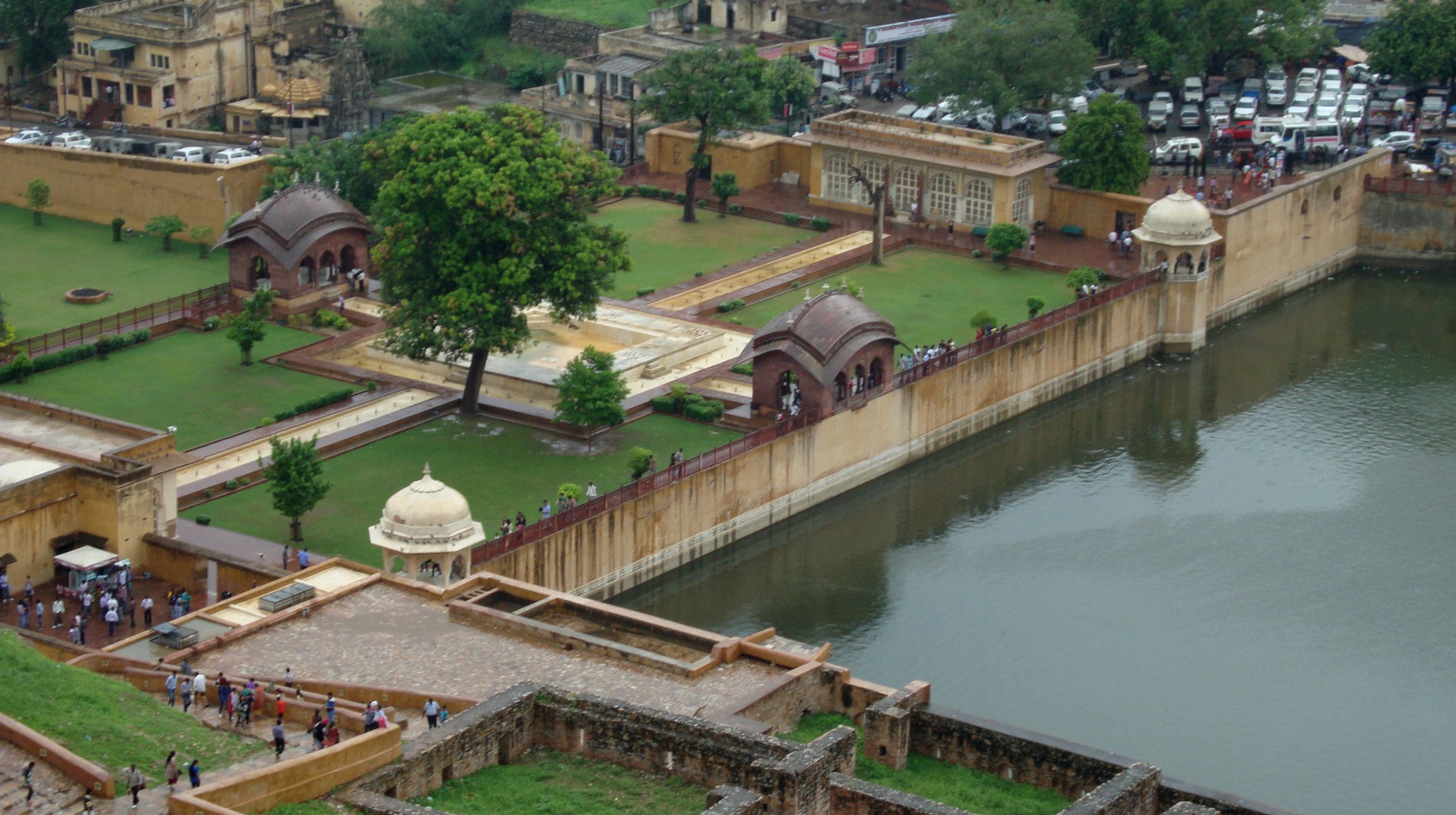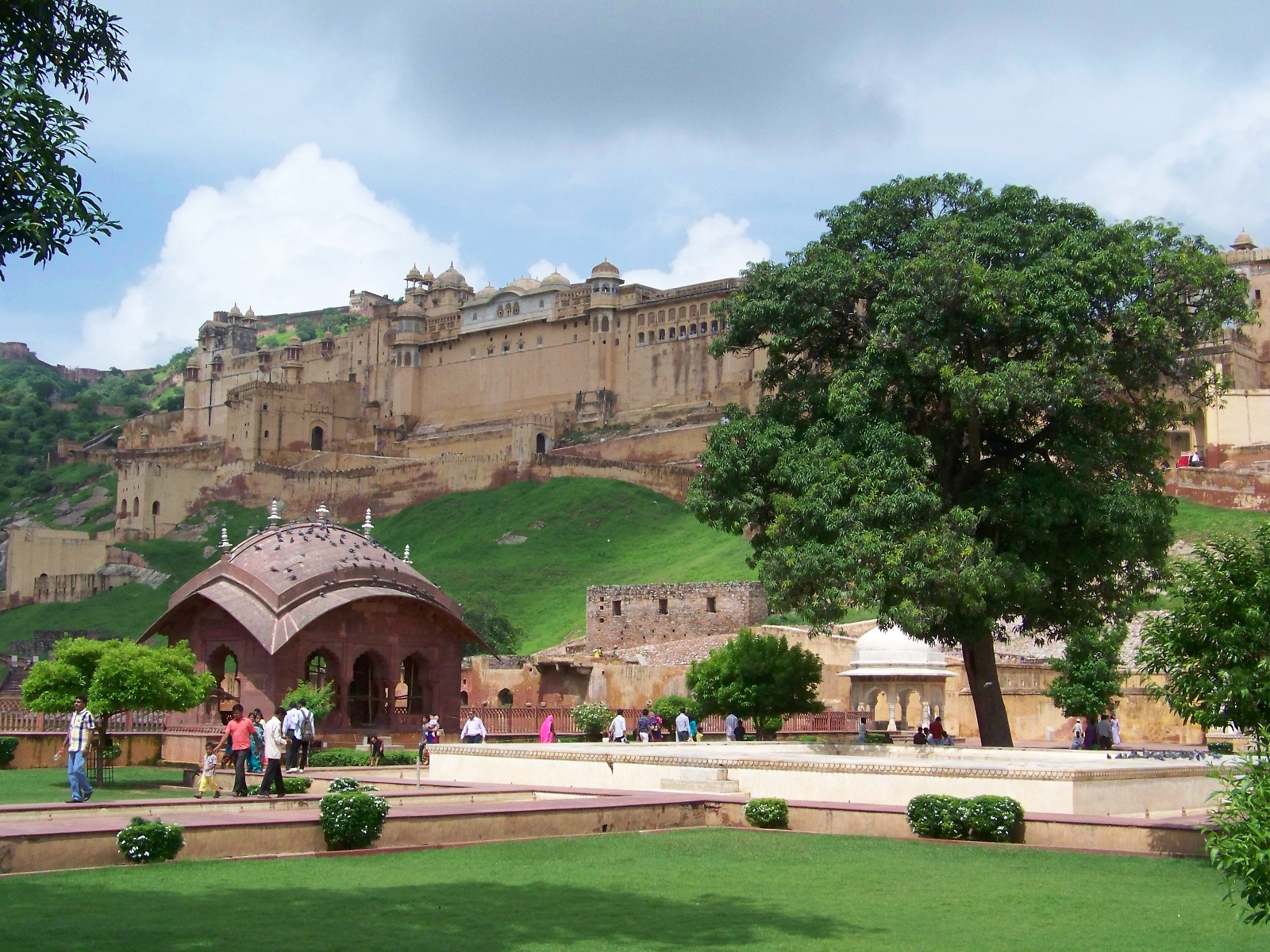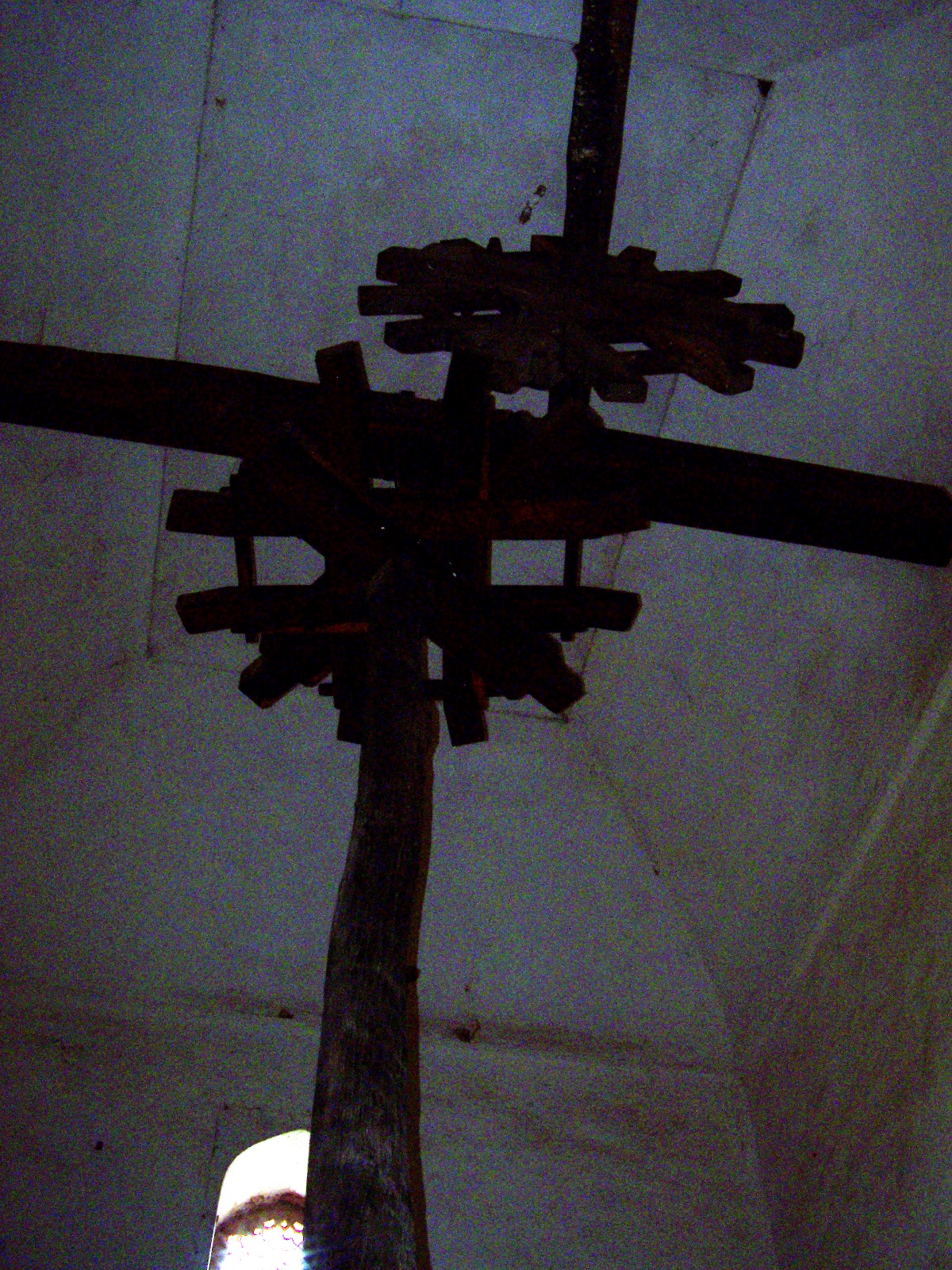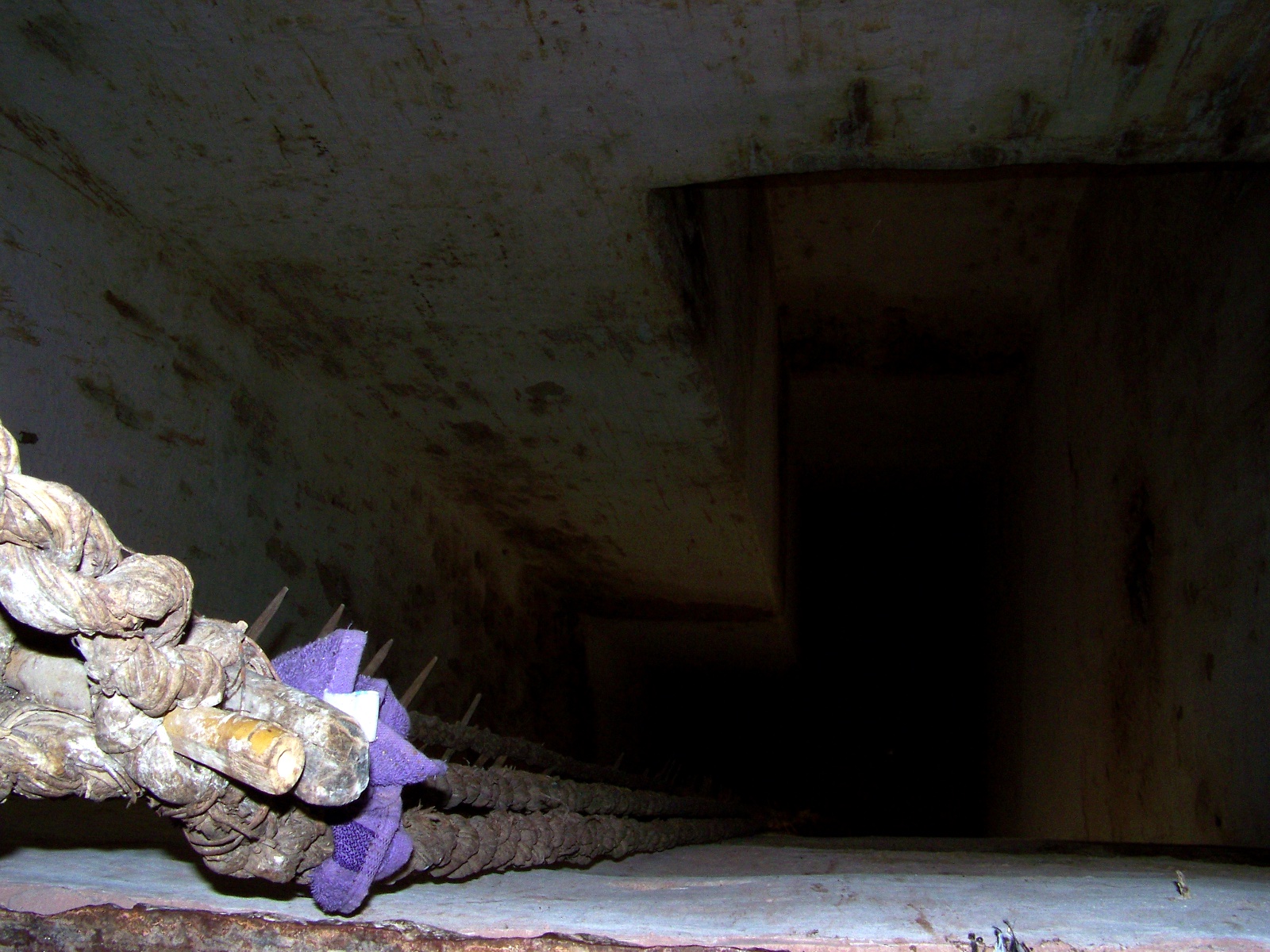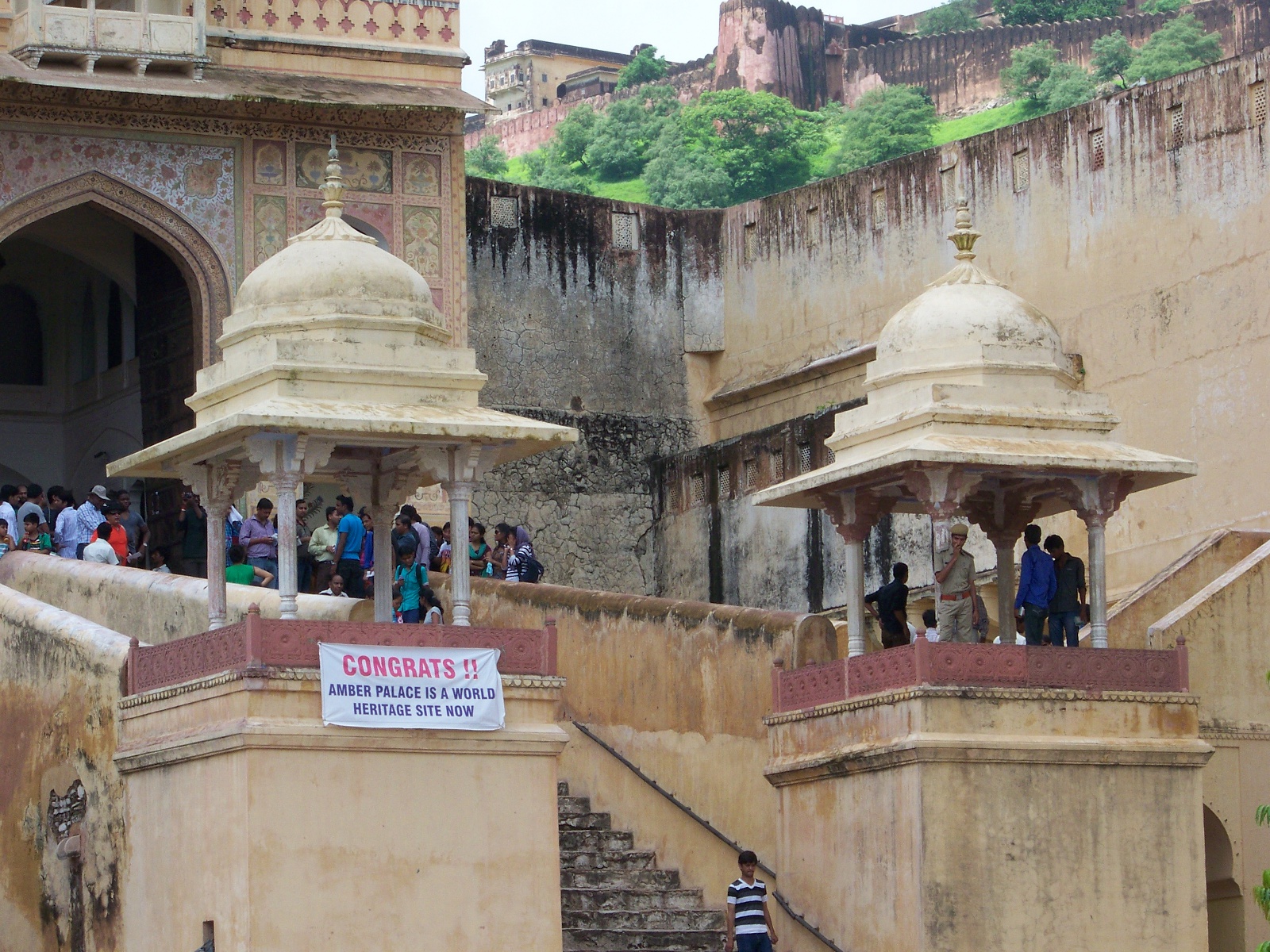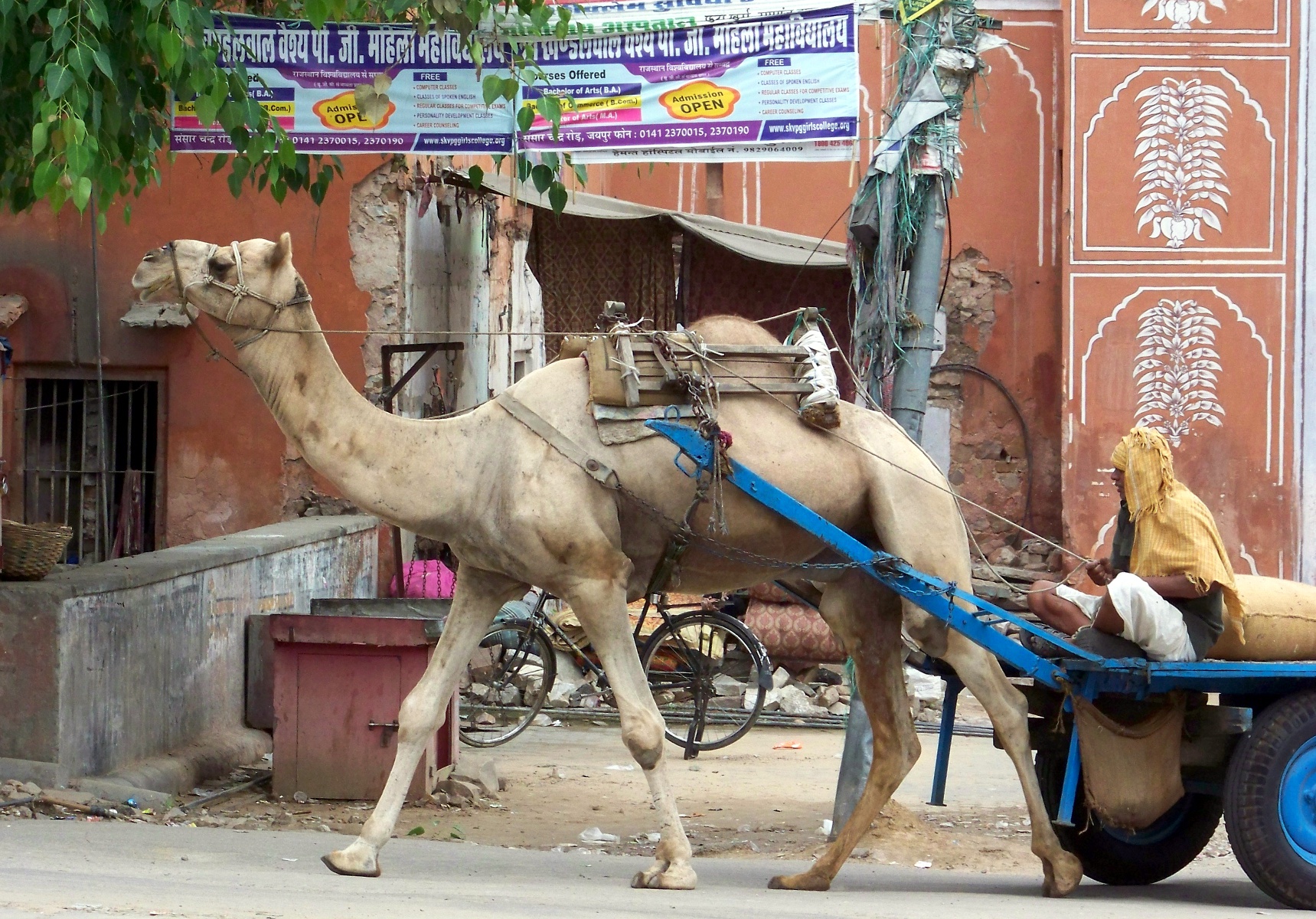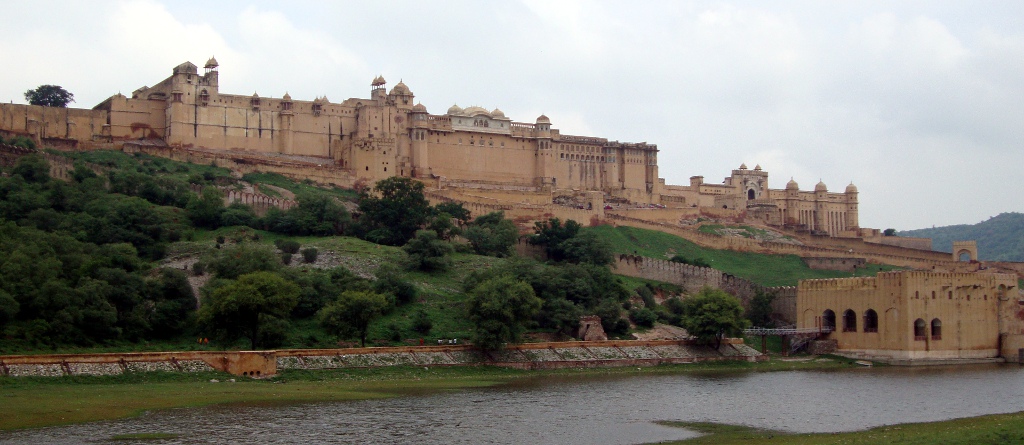
View of Amber Fort. The first stage of the water-lifting machinery is in the lower right of this picture.
In a blog post last summer, I discussed pre-modern artificial lakes in western India, including Jal Mahal Sagar in Jaipur and the Alwar Sagar. In arid western India during the Mughal period, artificial lakes provided water supplies for the cities that were growing in size during that time. These lakes still serve this purpose, although they have been supplemented by more modern lakes impounded by concrete or earthen dams.
Before the founding of Jaipur in 1727, the capital of the Kachhawaha Rajputs was at Amber (sometimes alternately spelled Amer). Amber Fort, built around 1600 during the reign of Man Singh I, was the royal palace; it is perched on a hill above the town. The water supply for Amber Fort was Maota Lake, impounded by a masonry dam in a valley below the palace. The rectangular top of the dam is landscaped as a geometric Mughal garden.
Since it supplied the all-important water needed for the inhabitants of Amber, Maota Lake was enclosed by the outer defensive walls of the city. Moving the water from the lake up to the palace posed a difficult engineering challenge. The topography of the site, and the requirement that the palace be located on a hilltop above the lake, made it impossible for the builders of Amber to use a gravity-fed aqueduct. Rather, they constructed an animal-powered multi-stage pumping station. A series of five ox-driven bucket lifts raised water from the lake level up to the palace.
The pre-modern water-raising machinery at Amber Fort is similar to technology used throughout southwestern Asia, from India to the Levant. In 2013, UNESCO declared Amber Fort and five other Indian castles a World Heritage Site, collectively designated “Hill Forts of Rajasthan.” Among other features of the forts deserving of world heritage status, the inscription mentioned “extensive water harvesting structures, largely still in use today.”
(For more on the architectural aspects of Amber Fort, and other Rajput structures, please see my post “Batman Goes to India.”)


